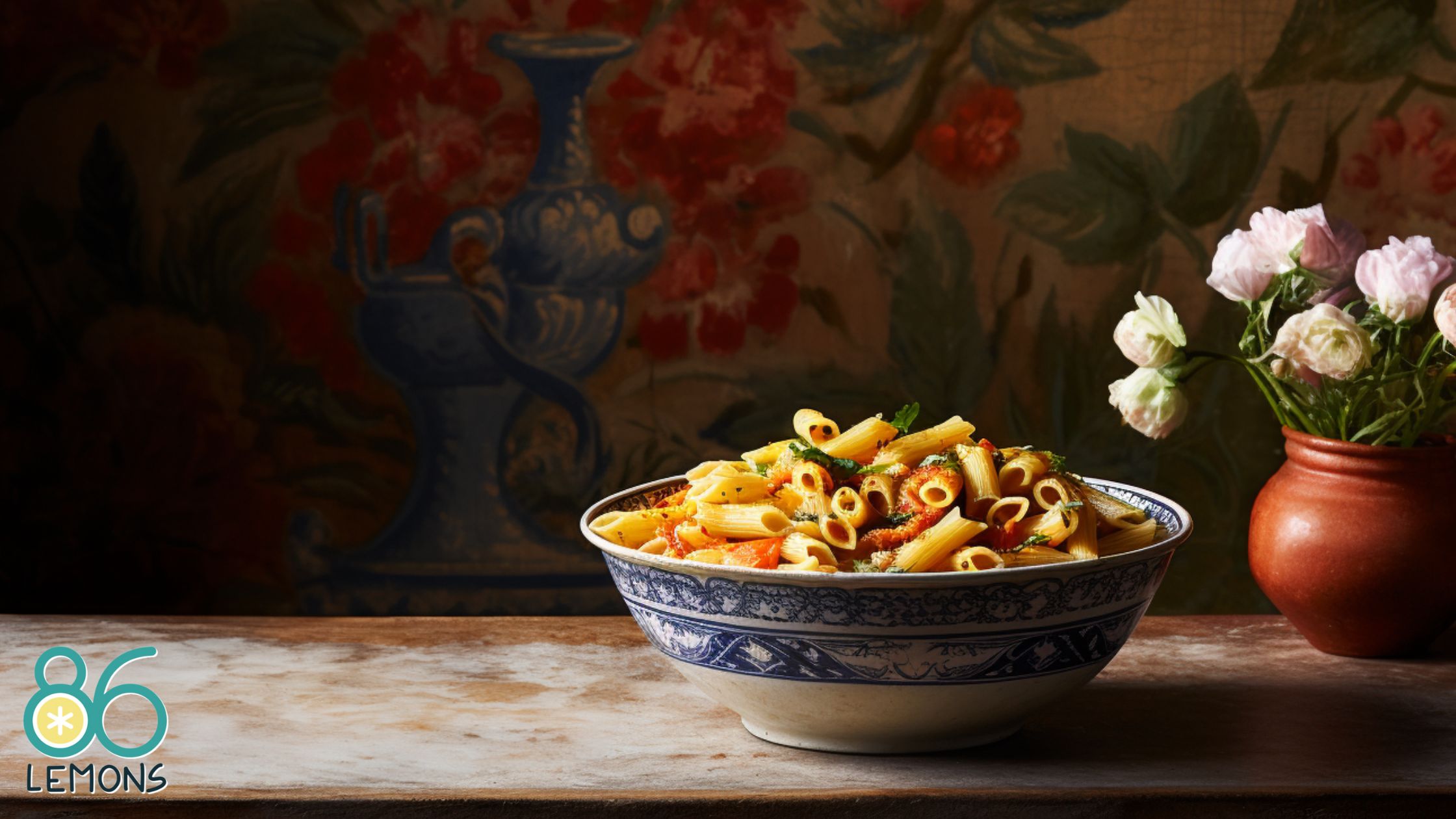Veggie pasta salad is the perfect dish when you’re looking for something that’s both healthy and easy to make. Whether you’re prepping for a quick lunch, a picnic, or a potluck, these veggie pasta salad ideas are versatile and jam-packed with flavor.
By incorporating a variety of fresh vegetables, you can create a colorful and nutritious vegan recipe. With an array of pasta to choose from, including whole wheat and gluten-free options, you can tailor your salad to fit any dietary need.
Creating your own veggie pasta salad is all about personal preference. Start by choosing a pasta shape that will hold onto the dressing and mix well with your add-ins. Then, select an assortment of fresh veggies for crunch and color.
Crafting the perfect dressing is crucial as it brings all the elements together; consider classic vinaigrettes or creamy vegan alternatives. Finally, proteins such as beans or tofu and a sprinkle of vegan cheese can add substance, while fresh herbs and spices will elevate the flavors of your salad.
Key Takeaways
- Veggie pasta salad is an adaptable dish suitable for various dietary needs and occasions.
- The choice of pasta, fresh vegetables, and dressing can greatly influence the taste and texture.
- To enhance the salad, consider adding plant-based proteins, vegan cheese, and fresh herbs.
Choosing the Right Pasta
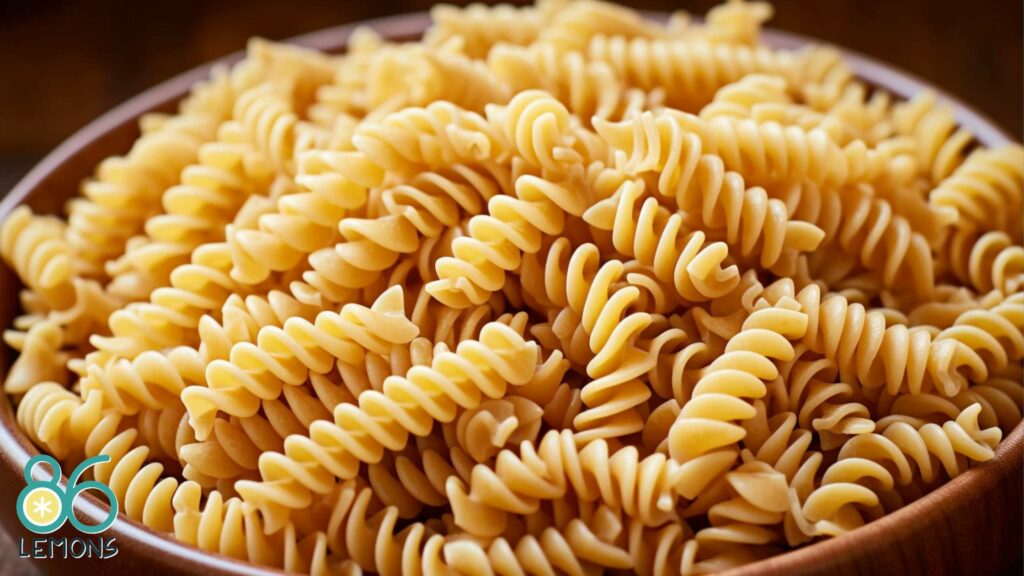
Picking the perfect pasta is crucial for your veggie pasta salad—it’s all about texture and how the noodles hold the dressing.
Pasta Types for Salad
Your choice of pasta can make or break your salad. For a veggie pasta salad, you’ll want to go for shapes that have crevices to capture the dressing and veggies. Rotini, with its spirals, is a fantastic choice; it’s designed to hold onto every bit of your zesty dressing.
Penne is another good pick, with its tube-like shape allowing bits of veggies to sneak inside. And if you like a salad that’s visually engaging, tri-color rotini adds a splash of color and fun.
Cooking Pasta to Al Dente
Cooking pasta to al dente – which means ‘to the tooth’ in Italian – is the sweet spot where your pasta is neither too hard nor too mushy. Here’s how to ensure you nail it: Start with a large pot of salted water, this adds flavor and keeps the pasta from sticking together.
Once boiling, add your pasta and stay sharp during the cooking time; you’ll want to taste test a minute before the packet suggests it’s done. Remember, it’ll keep cooking a bit even after you drain it. As for leftovers, al dente pasta ensures your salad stays superb even the next day.
Selecting Fresh Vegetables
The right mix of fresh vegetables can transform a simple pasta salad into a colorful and nutritious meal. Here’s how to pick and prep the best veggies for your dish.
Best Veggies for Pasta Salad
When you’re browsing the produce aisle or your local farmer’s market for pasta salad veggies, think about a variety of colors and textures.
- Bell Peppers: A mix of red, yellow, and orange bell peppers not only add a sweet, crisp bite but also a beautiful splash of color.
- Cherry Tomatoes: These bite-sized tomatoes are juicy and add a vibrant red to your palette.
- Cucumber: An English cucumber has fewer seeds and a milder taste, making it a refreshing addition.
- Broccoli: Adding florets of broccoli introduces a satisfying crunch and loads of nutrients.
- Red Onion: A little red onion goes a long way; it brings a sharp yet slightly sweet flavor.
- Carrots: Grated or thinly sliced, carrots provide a sweet earthiness and an extra crunch.
- Zucchini & Spinach: For a green twist, consider ribbons of zucchini or a handful of spinach.
Remember, the freshest veggies will have a firm texture, vibrant color, and a clean, fresh scent.
Prepping and Cutting Vegetables
When you’re ready to start prepping your vegetables, keep in mind that uniform pieces not only look better but also ensure an even distribution of flavors in every bite.
- Bell Peppers: Slice into thin strips or dice into bite-sized pieces.
- Cherry Tomatoes: Halve or quarter these to release some of the juices.
- Cucumbers: Peel if preferred, then chop or slice into half-moons.
- Broccoli: Cut into small, bite-sized florets and consider blanching them quickly to brighten the color and soften the texture slightly.
- Red Onion: Fine dice or thinly sliced for a more mellow flavor.
- Carrots: Grate or julienne for easy eating.
- Zucchini: Slice into thin rounds or half-moons.
- Spinach: Rough chop to make it fork-friendly.
As you prepare these veggies, try to keep the pieces around the same size as your pasta shapes to create a balance between the pasta and the vegetable components.
Crafting the Perfect Dressing
Creating a memorable veggie pasta salad often comes down to the dressing. It’s the liquid personality that coats each bite, so making the right choice between a homemade concoction or a store-bought staple is crucial. Also, balancing the flavors to complement your selection of veggies can turn a simple salad into a standout dish.
Homemade vs Store-Bought Dressing
When you opt for homemade dressing, you’re in complete control. You can achieve the exact flavor profile you desire, and it’s easier than you might think. For a refreshing and tangy kick, whisk together olive oil and lemon juice for a simple lemon dressing, or introduce Dijon mustard for a bit of zing. Want something with Italian flair? Mix up your own Italian dressing with olive oil, vinegar, herbs, and a squeeze of lemon.
On the other hand, store-bought dressings can be a convenient and consistent option. Just ensure you’re selecting a dressing that aligns with your salad’s flavor theme. Whether it’s a bright and zesty dressing or a rich and nutty pesto, read the labels to avoid any non-vegan ingredients that could sneak into your meal.
Balancing Flavors in Dressing
When you’re mixing your dressing, consider the taste of each component:
- Sweet: Consider a touch of agave syrup or balsamic reduction.
- Sour: A squeeze of fresh lemon juice or a dash of vinegar can work wonders.
- Bitter: Balance it with the sour elements; lemon zest can be a good choice here.
- Salty: A pinch of kosher salt or, for an umami edge, a splash of soy sauce.
- Oily: Good quality olive oil provides smoothness and ties the flavors together.
Remember, your dressing is the magic that ties your salad together, so start with small amounts of each ingredient and taste as you go. The perfect balance is when no single flavor overpowers another, and they all complement the fresh produce in your pasta salad.
Veggie Pasta Salad Ideas: Incorporating Proteins
When you’re looking to add substance and flavor to your veggie pasta salad, choosing the right proteins and cheeses can make all the difference.
Protein Choices for Veggie Pasta Salad
Veggie pasta salads don’t just have to be about the vegetables; they can be protein powerhouses too. Chickpeas are a stellar choice, bringing a satisfying texture and are also rich in protein. Tossing them into your salad not only bulks it up but adds a nutty flavor.
If you’re okay with including soy-based products, edamame adds a bright, fresh element and a boost of plant-based protein. They’re super easy to prepare — often just needing a quick boil — and they’re ready to mingle with your salad.
Enhancing Flavor with Herbs and Spices
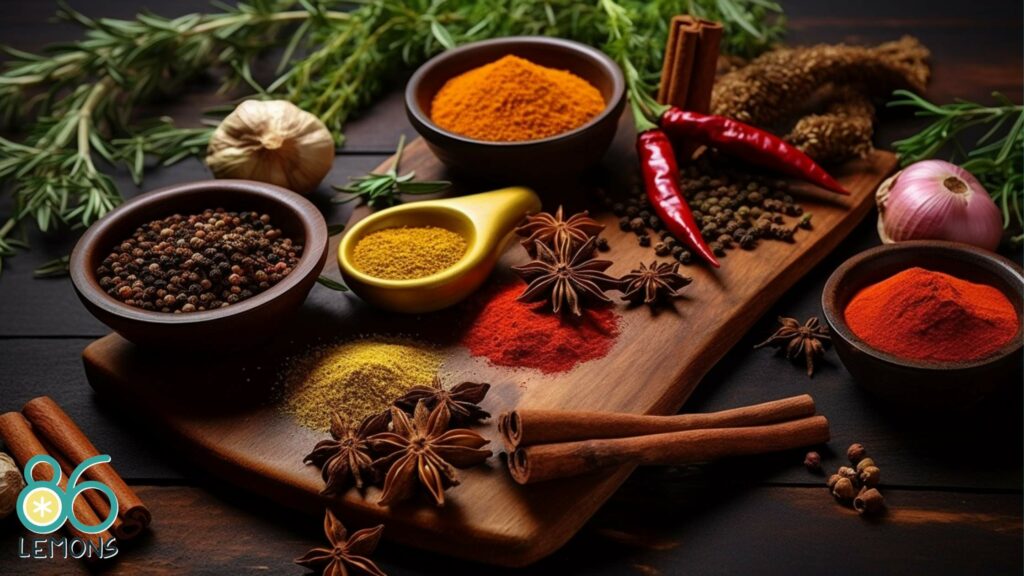
In a veggie pasta salad, the right mix of herbs and spices can turn a simple dish into a symphony of flavors. Here’s how to make your salad sing.
Fresh vs Dried Herbs
Fresh herbs like basil and parsley add a bright and vibrant taste to your pasta salad that dried herbs can’t match. Use them generously as they bring a lighter, more aromatic character.
If you opt for dried herbs, remember they’re more concentrated in flavor, so you’ll use less. A good rule of thumb is one tablespoon of fresh herbs is equivalent to one teaspoon of dried herbs.
- Basil: Delicate and sweet, best added just before serving.
- Parsley: Crisp and peppery, a hardy herb that holds up well.
Spicing Up Your Salad
Garlic brings a pungent kick that can make your tastebuds dance, so consider using it to boost your salad’s flavor profile. For a tangy zip, lemon zest works wonders, especially when combined with dill or pepper. Always season with salt to enhance all the other flavors without overpowering them.
Remember to taste as you go and adjust your herbs and spices to your preference for a truly flavorful veggie pasta salad.
Mastering Pasta Salad Assembly
When you’re putting together a veggie pasta salad, it’s crucial to layer your ingredients and mix them in the right order to ensure each bite is packed with flavor.
Layering Ingredients for Maximum Flavor
Start by choosing a variety of fresh vegetables that’ll stay crisp and juicy. Think bell peppers, cherry tomatoes, or cucumbers. Then, consider adding some aromatics like garlic or fresh herbs. To infuse your veggies with extra taste, let them marinate in some of the dressing.
- Marinate Veggies: Pour half of your dressing over the veggies in a large bowl. This works best if you give the veggies time to marinate and absorb the flavors, ranging from 30 minutes to a couple of hours at room temperature.
The Right Order of Mixing
Mixing your pasta salad in the right sequence can make a difference in the final taste and texture.
- Cook Pasta: Boil your pasta until it’s just al dente. Then drain it and give it a quick rinse with cold water to stop the cooking process. This ensures your pasta remains firm and ready to soak up the dressing.
- Combine with Veggies: Once your pasta is at room temperature, add it to the marinated vegetables.
- Final Touches: Add any garnishes last to maintain their integrity, like fresh basil leaves or vegan parmesan. Before serving, give the pasta salad one more gentle toss to distribute the flavors evenly.
- Store Properly: If you’re not serving your pasta salad immediately, keep it in an airtight container in the fridge. This keeps everything fresh and prevents the pasta from absorbing too much dressing and becoming soggy.
Making Pasta Salad Ahead of Time
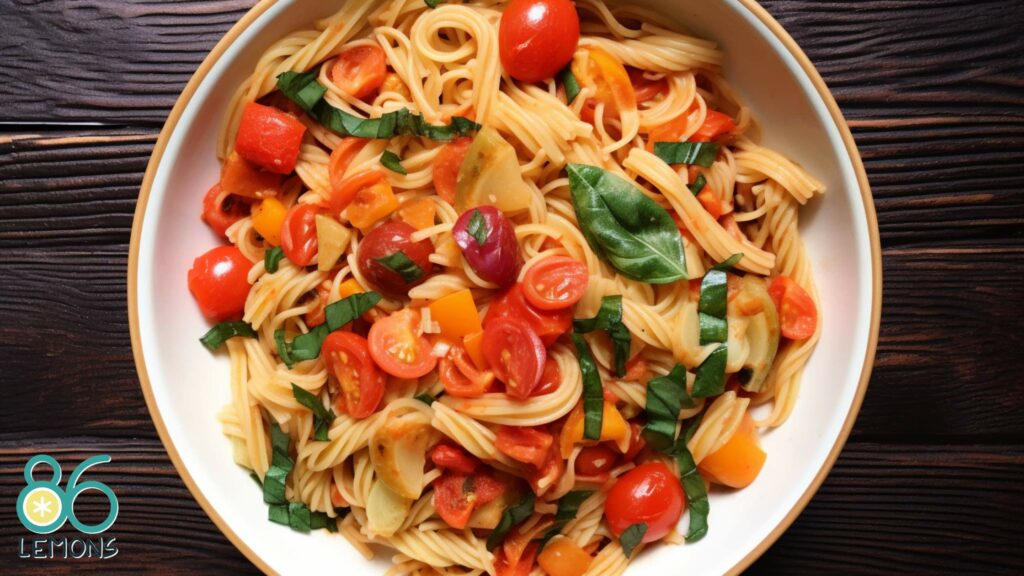
Getting a head start on your pasta salad can save you plenty of prep time and stress. By cooking your pasta and chopping your veggies in advance, you’ll be able to assemble your salad quickly when it’s time to serve.
Preparation Tips for Advance Cooking
When you’re planning to make pasta salad ahead of time, cooking your pasta just right is key — you want it al dente, which means it should still be slightly firm to the bite. Use a timer to make sure you don’t overcook it.
After draining the pasta, toss it with a little olive oil to prevent sticking, and then let it cool completely before adding the vegetables and dressing.
Your veggies should also be prepped ahead of time. Chop your fresh vegetables uniformly to ensure they all get their fair share of dressing, and refrigerate them in separate containers. Combining them with your cooled pasta the day before will give your flavors time to meld together in the fridge.
Storing Tips for Freshness
Use an airtight container to store your pasta salad in the fridge. This retains the freshness and prevents it from absorbing other flavors. Your pasta salad can be refrigerated for up to 5 days, making it perfect for leftovers and ensuring you have a delicious meal ready when you’re short on time.
To maintain the best texture and taste, pack the dressing separately and mix it in about an hour before serving. This prevents your pasta from becoming too soft and your veggies from wilting, ensuring that each bite is as fresh as possible. If you’ve got extra greens like spinach or arugula, add them fresh before serving to keep them crisp and vibrant.
Serving Suggestions and Pairings
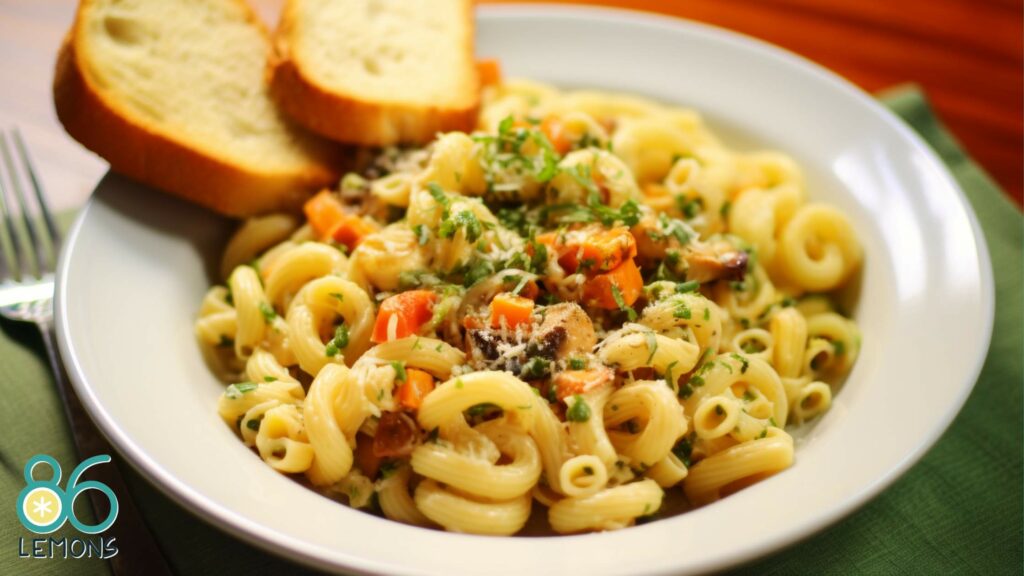
When you’ve whipped up a vibrant veggie pasta salad, the right accompaniments can elevate your meal from simple to spectacular, whether it’s for a casual lunch or the centerpiece at a potluck.
Ideal Accompaniments for Veggie Pasta Salad
Sides for Sharing:
At your next picnic or potluck, alongside the salad, include a platter of falafel and a bowl of mixed olives. They’re perfect for a crowd and easy to share.
Bread and Spreads:
Offer sliced baguettes with a selection of spreads like olive tapenade or artichoke dip. The crunch of the bread and the creaminess of the spreads provide a delightful contrast to the pasta salad.
Serving Sizes and Presentation Tips
Portion Control:
If it’s a side dish for dinner, gauge about 1/2 cup to 1 cup of pasta salad per person. For a main at lunch, 1 to 1 1/2 cups will be satisfying without overdoing it.
Eye-Catching Presentation:
Serve your pasta salad in a large, shallow bowl to showcase its colorful ingredients. If it’s for a larger gathering, consider a serving utensil that complements the size of your salad components to make self-serving hassle-free.
For Individuals:
Incorporate smaller servings in mason jars for picnics, which makes transportation and serving a breeze and also adds a fun twist to your meal presentation.
Adapting the Salad for Dietary Restrictions
Switching up your veggie pasta salad to suit your dietary needs is simpler than you might think. Check out these fresh takes that keep things delicious and inclusive.
Vegan Pasta Salad Variations
For a vegan pasta salad, focus on plant-based proteins like chickpeas and substitute traditional cheese with a vegan alternative. A quick and healthy chickpea vegetable pasta salad becomes a hearty meal with these protein-packed legumes. If you’re craving a creamy dressing, vegan mayonnaise works wonderfully—mix it with vinegar and a touch of salt for a tangy twist.
Gluten-Free and Low-Carb Options
Those avoiding gluten can still enjoy a scrumptious vegetarian pasta salad by opting for gluten-free pasta made from brown rice, lentils, or chickpeas. These alternatives not only dodge gluten but also boost the protein content, making your salad a healthier choice.
If you’re looking to go low-carb, consider spiraled veggies like zucchini or squash as a pasta substitute—toss them with your favorite veggies and dressing for a light and nutrient-packed meal.
Exploring International Flavors
When you’re crafting that perfect veggie pasta salad, diving into international flavors can transform your meal from simple to spectacular. Let’s bring your salad game to a global level, starting with these must-try ideas!
Greek Orzo Salad
Imagine savoring each bite of your Greek Orzo Salad, where tender orzo meets the boldness of Kalamata olives and the fresh, sharp taste of feta cheese—wait, scratch the feta, you’re keeping it vegan, of course!
But don’t worry; you can still get that creamy texture by tossing in some dairy-free cheese alternatives. Don’t forget a generous drizzle of olive oil and red wine vinegar for that authentic Mediterranean tang.
Italian Fusion
You can’t talk about pasta without nodding to Italy. Your Italian Fusion salad is a colorful mix of al dente pasta twirls, juicy tomatoes, and crisp bell peppers.
But here’s the kicker—swap out traditional Italian dressing for a zesty vegan Italian dressing that packs all the flavorful punch without any of the dairy. It’s like taking a bite of Italy and America in one mouthful, flavorful and oh-so-refreshing for any season!

